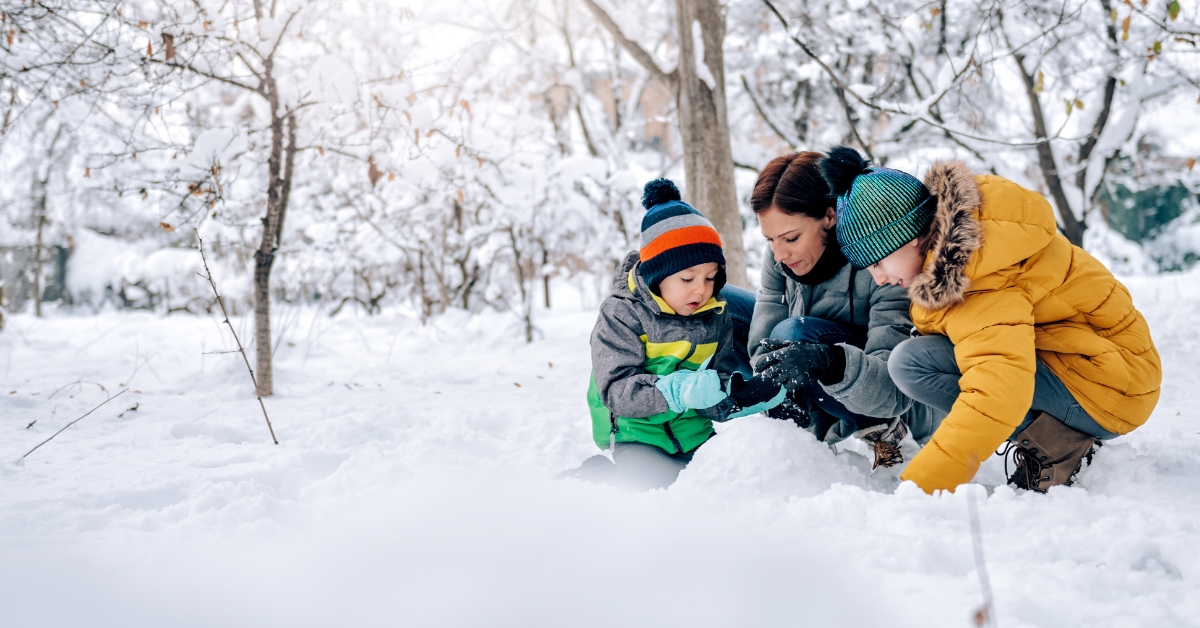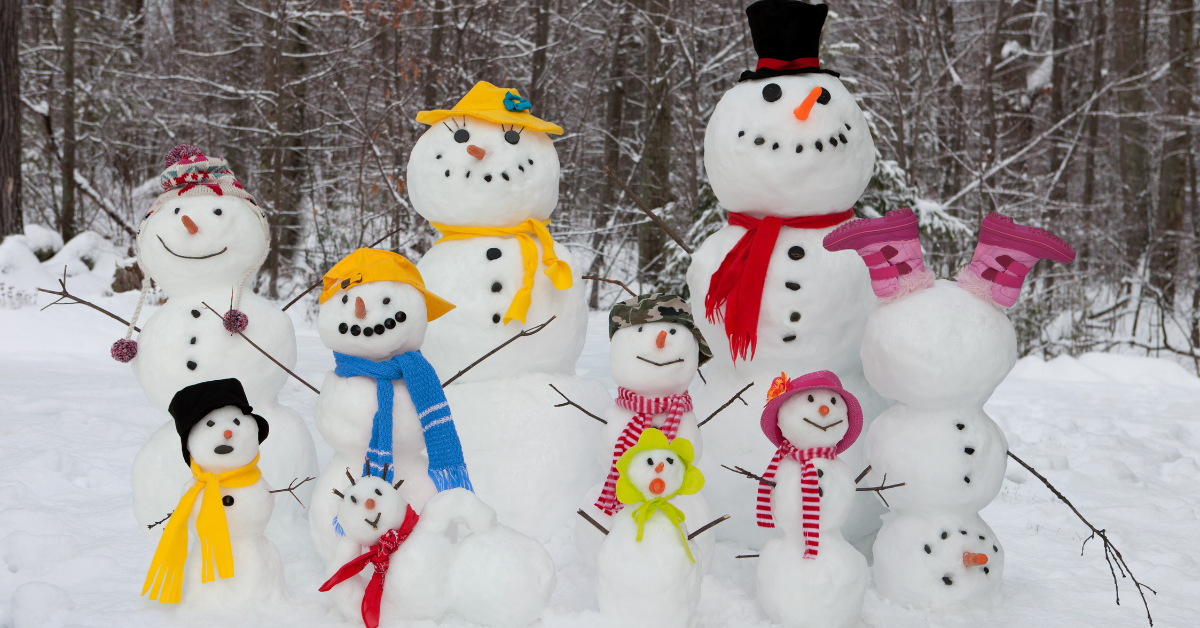As the holiday season approaches, we are reminded of festive decorations, family gatherings, and the joy of giving. However, for students with language-based learning differences, this time of year can bring unique challenges. The bustling activities and changes in routine, while exciting, can also increase anxiety and stress.
At Eagle Hill School, we understand the emotional fluctuations our students may experience during the holidays. Learning differences often intersect with anxiety and stress, which can be magnified during this fast-paced and expectation-laden period. Disruptions to support systems and routines, along with the vibrant and overwhelming world around them, can make it challenging.
So, as we step into this holiday season, let us do so with a sense of understanding, patience, and a deep commitment to supporting our children in every way we can.
Recognizing Unique Challenges
During the holiday season, with its dazzling lights and joyful gatherings, there exists a lesser-discussed reality for many students who have learning differences. The disruption in routines, the overwhelming sensory stimuli, and the societal expectations that accompany this time of year can amplify feelings of stress and anxiety.
For these students, the holidays are not simply a break from school; they often entail navigating a world that feels increasingly unfamiliar and demanding. This includes experiencing heightened levels of anxiety. This should serve as a poignant reminder of the unique emotional landscape our students traverse daily. Challenges with information processing, communication difficulties, and the struggle to keep up in social situations can become even more pronounced amidst the bustling holiday season. This time of year, which unavoidably deviates from the regular structure and support systems provided at school, inadvertently exacerbates feelings of being overwhelmed and misunderstood.
By acknowledging and addressing these distinctive challenges, we strive to cultivate an environment where every student can embrace the joy and warmth of the season, in a manner that feels secure and comforting to them. In the subsequent sections, we will delve into practical strategies and tips to assist our students and their families in managing holiday-related stress, thereby fortifying the resilience, confidence, and sense of belonging that lie at the core of the Eagle Hill experience.
Tailored Strategies for Managing Stress
As parents and guardians of children with language-based learning differences, you play a pivotal role in helping your child navigate the challenges of the holiday season. At Eagle Hill School, we believe in a philosophy of resilience and individualized support, and we understand that each child’s needs are unique. Here are some specific strategies you can implement to help your child manage holiday stress, keeping in mind their learning differences:
1. Creating a Predictable Routine During Holidays
Why It’s Important: Students with learning differences often thrive in structured environments. The holidays can disrupt this structure, leading to increased anxiety.
What You Can Do: Try to maintain a consistent daily routine during the holidays. This includes regular meal times, bedtime routines, and scheduled activities. Even small predictable elements can provide a sense of security and normalcy.
2. Encouraging Open Communication about Feelings and Anxieties
Why It’s Important: Open communication helps children feel heard and understood. It’s crucial for children with learning differences who might struggle to articulate their feelings.
What You Can Do: Create a safe and non-judgmental space for your child to express their feelings. Regular check-ins can help them articulate their anxieties and give you insight into how they're coping.

3. Simplifying Holiday Expectations and Celebrations
Why It’s Important: Simplifying expectations can alleviate the pressure that the holidays often bring, especially for children who might feel overwhelmed by too many activities or social demands.
What You Can Do: Focus on quality over quantity. Choose a few meaningful traditions or activities rather than a packed schedule. Let your child have a say in what holiday activities they’d like to participate in.
4. Incorporating Relaxation and Mindfulness Practices Suitable for Their Learning Style
Why It’s Important: Mindfulness and relaxation techniques can be effective tools for managing stress and anxiety, and can be adapted to suit different learning styles.
What You Can Do: Explore different relaxation techniques such as guided imagery, breathing exercises, or gentle yoga. Find a method that resonates with your child and encourage regular practice.
5. Prioritizing Healthy Habits (Sleep, Nutrition, Physical Activity)
Why It’s Important: Good sleep, balanced nutrition, and regular physical activity are foundational to managing stress and maintaining mental well-being.
What You Can Do: Ensure your child gets adequate sleep, eats nutritious meals, and stays active. Even simple activities like a family walk can be beneficial.
Supporting Emotional Well-being
The emotional well-being of students with learning differences is a cornerstone of their overall development and success, especially during the complex holiday season. They may struggle with feelings of frustration, inadequacy, or isolation due to their learning experiences. During the holiday season, these feelings can be intensified by the hustle and bustle, changes in routine, and social pressures. Providing emotional support during this time is vital in helping them navigate these challenges and feel understood and valued.
Recognizing Signs of Heightened Anxiety or Depression
Being alert to changes in your child’s behavior during the holidays can help in identifying signs of anxiety or depression. Look for indications such as:
- Withdrawal from activities they normally enjoy.
- Changes in eating or sleeping patterns.
- Increased irritability or moodiness.
- Expressions of hopelessness or excessive worry.
- Uncharacteristic disinterest in holiday events or family gatherings.
These signs can signal that your child is struggling and may need additional support.
The Role of Family in Providing a Supportive Environment
The family plays an indispensable role in fostering an environment where emotional well-being is prioritized. Here are some ways you can support your child:
Active Listening: Show empathy and understanding when your child expresses their feelings. Listen actively without immediately offering solutions or judgments.
Consistent Reassurance: Regularly reassure your child of their worth and your unconditional support. Celebrate their strengths and progress, not just academic achievements.
Creating a Safe Space: Foster a home environment where emotions can be openly shared. Encourage discussions about feelings, making it clear that it’s okay to not always feel happy or enthusiastic, especially during the holidays.
Involvement in Decision Making: Include your child in holiday planning and decisions. This involvement can give them a sense of control and reduce feelings of being overwhelmed.
Seeking Professional Help if Needed: If signs of anxiety are persistent or severe, consider seeking help from mental health professionals. Early intervention can be crucial in managing these challenges effectively.
Embracing the Season with Understanding and Empowerment
At Eagle Hill, we advocate for these strategies not just as a means to manage holiday stress, but as part of a comprehensive approach to support our students' overall well-being. By embracing these practices, you reinforce the resilience and self-advocacy we cultivate in our students, helping them navigate not only the holiday season but also their broader educational journey. Remember, each small step you take can make a significant difference in your child's experience of the holiday season, turning a potentially stressful time into an opportunity for growth and joy.



